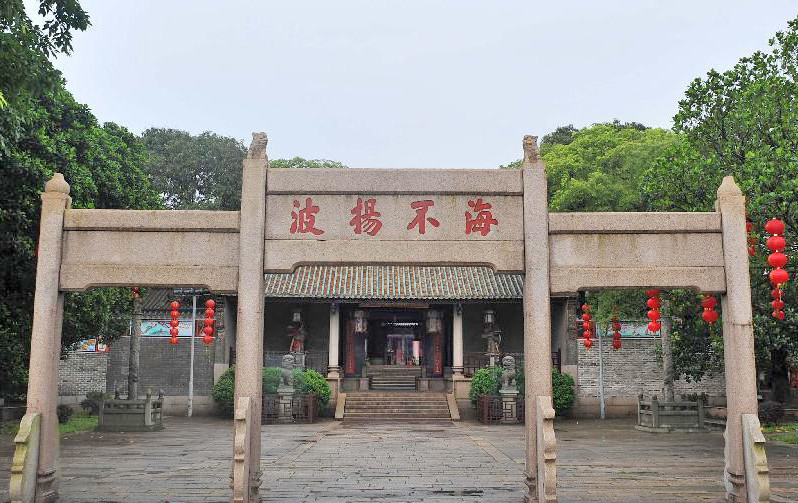Ancient Maritime Silk Road facilitated cultural exchange

A stone arch sits in front of the South China Sea Temple at Miaotou Village in Guangzhou, where ocean-worshipping rituals were held. The red Chinese characters on it read “May the sea never surge.”
The ancient Maritime Silk Road was one of the major channels for material and cultural exchanges between Oriental and Occidental civilizations, a scholar said on March 24.
Liu Yingsheng, a professor of history from Nanjing University, made these remarks at a recent symposium dedicated to the topic of the Maritime Silk Road and the course of human civilization.
Such material exchanges can be revealed through archaeology by applying modern technologies. An analysis of 250 pieces of jewelry unearthed from graves of the Han Dynasty (202 BCE-220 AD) in Guangzhou has been conducted that reveals chemical composition, major mineral elements and trace elements characteristics, said Li Qinghui, a research fellow from the Shanghai Institute of Optics and Fine Mechanics under the Chinese Academy of Sciences. By comparing the jewelry with artifacts discovered in other Chinese provinces as well as Southeast Asia and South Asia that date back to the period from 500 BCE to 500 AD, scientists have found that these pieces of jewelry originated from other regions of China and Southeast Asia, indicating that Guangzhou used to be a major eastern hub of the Maritime Silk Road, he said.
The question of whether Buddhism was first introduced into China by land or sea has also attracted academic attention. Yao Chongxin, a professor of anthropology from Sun Yat-sen University, said the idea that a route linking two separate regions, once formed, will be sufficient and facilitate the immediate spread of a local religion to another region, is an ideal assumption. The actual situation is far more complicated.
Other conditions, particularly economic ones, play a crucial role in the successful spread of a religion, he said. The earliest proof of China’s introduction of Buddhism is seen in the records in the bamboo slips of the Han Dynasty discovered in Dunhuang City, northwestern China’s Gansu Province. The history of how Buddhism was introduced to China through sea routes still requires further studies, he said.
As economic globalization progresses, China’s “Belt and Road” initiative is expanding to more nations and regions than traditional Silk Road routes. Scholars of Maritime Silk Road studies should extend their horizon to the regions along the new Maritime Silk Road, said Li Qingxin, a research fellow from the Institute of History and Sun Yat-sen at Guangdong Academy of Social Sciences.
Great attention should be paid to studies of overseas Chinese and business groups along the Maritime Silk Road who contributed significantly to expanding the road and promoting communications among civilizations, Li said. Exploring the history of overseas Chinese along the route will provide new space and insight to the studies of Maritime Silk Road, he said.
Personnel movement promoted by trade on the Maritime Silk Road eventually boosts cultural communication, said Yan Haiming, a scholar from the Chinese Academy of Cultural Heritage. Relics of Buddhism, Christianity and Islamic culture can be found in China, demonstrating China’s inclusion of foreign civilizations, he said.
More exploration of the historical relics and literature of the Maritime Silk Road should be carried out in Guangdong Province, said Long Jiayou, director of the Administration of Cultural Heritage of Guangdong Province. Only by integrating the existing literature with field investigations can practical problems regarding protection programs be resolved, he said.
WU YONG is a reporter at the Chinese Social Sciences Today.
